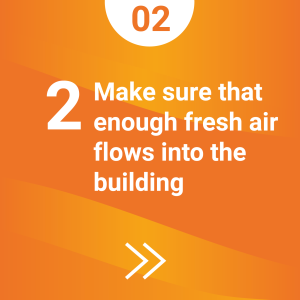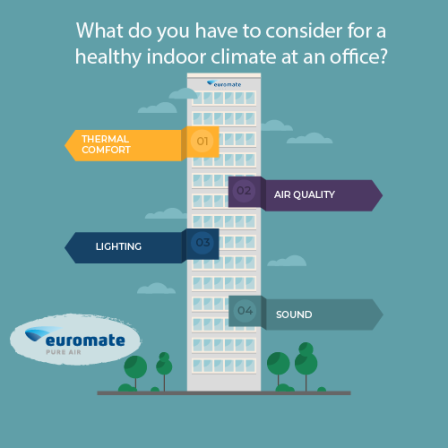Tips for a virus proof office, school or workspace

Our consultants get many questions about how a working environment can be made virusproof in terms of ventilation and clean air. And what good ventilation actually means. As far as we are concerned, ventilation cannot be separated from air cleaning. We are happy to share a number of tips to get you started.

A person consumes oxygen and excretes waste. As a result, there is a need for fresh air. This air always replaces (part of) the indoor air that is polluted by, for example, moisture, dust or pathogens.
Ventilation is possible via natural ventilation (for example grids, windows or cracks) or via mechanical ventilation (ventilation system). If there is an air treatment installation, the air is sucked in from outside and brought into the room(s).
To check whether proper ventilation is possible in your working environment, you can check, among other things, whether the ventilation system that has been installed is up to date. In addition, it is good to know whether windows or doors can be opened throughout the year.

Once the ventilation options have been checked, set the system in such a way that the supply of fresh (outside) air is constant. Our advice is that the room in question is fully supplied with fresh air at least 5 times per hour (air change).
Unfortunately, not every ventilation system appears to be suitable to handle this quantity and an adjustment is usually a large and expensive operation. In that case, it is necessary to take additional measures by absorbing the ventilation shortage via a (mobile) air cleaner.

A well-ventilated interior alone is not enough. In addition to letting in clean outside air through ventilation, it is necessary that the existing indoor air is cleaned. This is very important so that pollution in the form of viruses, fine particulate and bacteria does not linger and is spread further.
The use of an air conditioner is undesirable since the polluted indoor air is not cleaned before it is blown around or recirculated.

When choosing an air cleaner, the number and size of the room (s), its use, number of users, the air flow, the number of air changes and the correct, suitable filters must be taken into account.
There are many air cleaners on the market from which it is not always clear whether the solution in question really helps to remove viruses and bacteria in an adequate way. We therefore always recommend requesting independent evidence, so you can assume that the effect has actually been scientifically proven and that no false safety arises.

As you can see, there is a lot involved in making the ventilation in your office or work environment COVID-19 proof.
Of course we are happy to provide you with free advice specifically based on your situation. Then everyone can breathe a sigh of relief!







